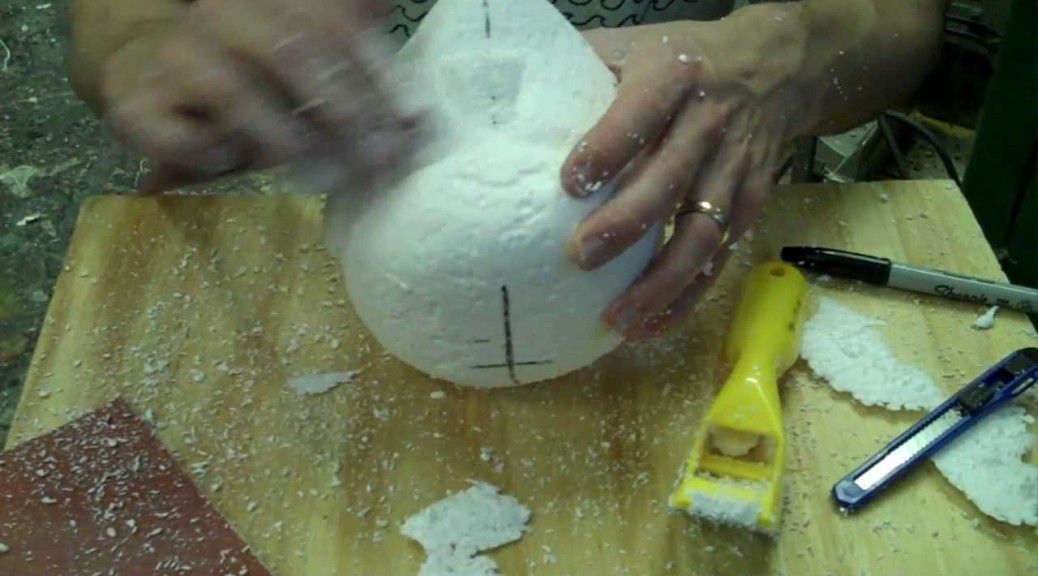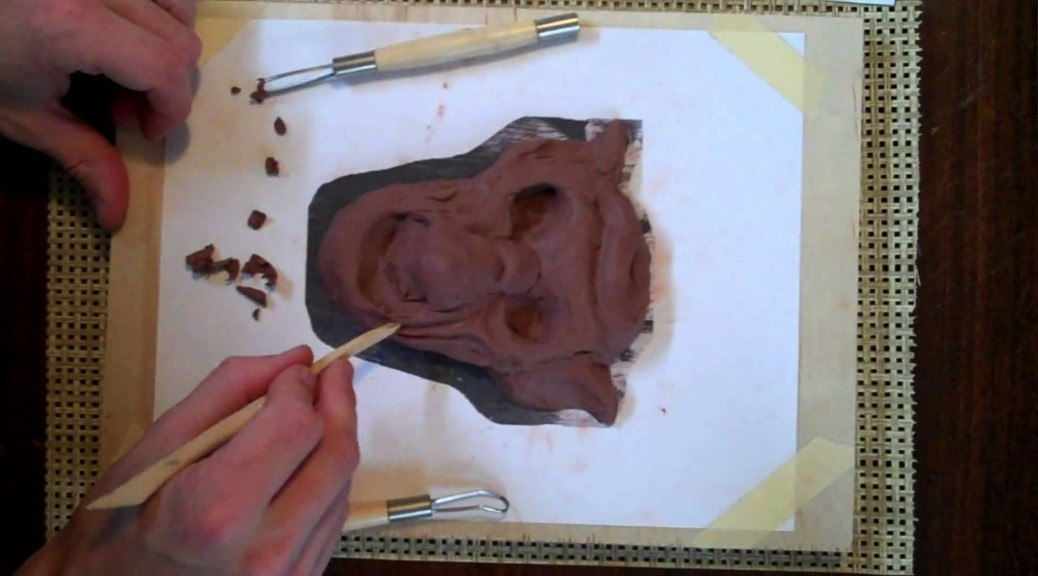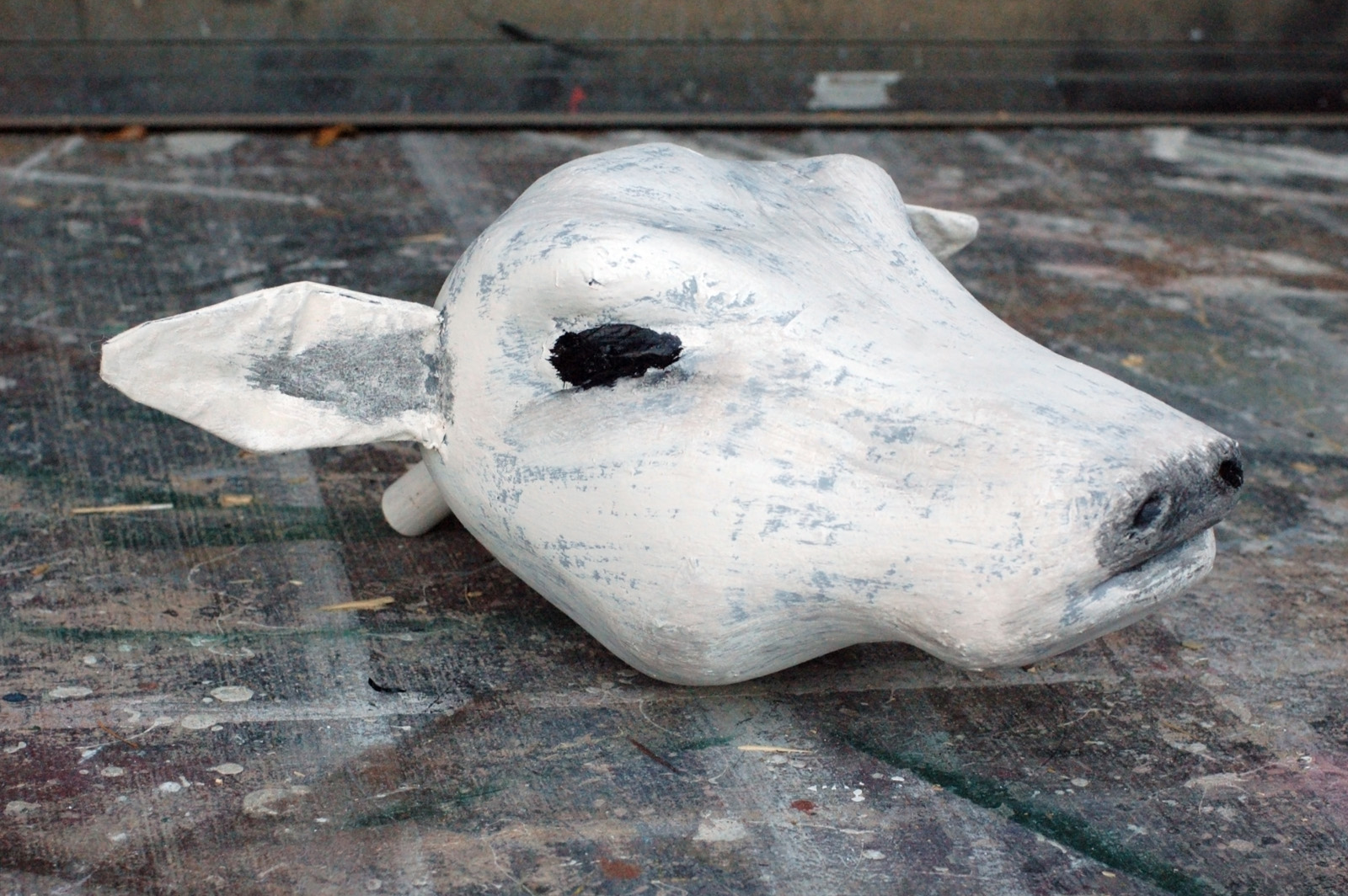I have a new video up at the Prop Building Guidebook companion website video page. This one shows basic sculpting and carving of foam. I filmed myself while sculpting a small head for the Vicky “doll” in the recent production of Cloud 9 which we just opened.
Tag Archives: sculpt
Companion Videos for my Book
With less than seven weeks before the release of The Prop Building Guidebook: for Theatre, Film, and TV, I have begun adding videos to that website. These videos are meant to augment the content of the book, since some things are just easier to show in motion, rather than describe with text and pictures. I will be adding new videos every week until the book launches on February 13th.
So without further ado, I am proud to announce the brand-new Prop Building Guidebook companion video page. Only two videos are up at present; the first is on the vacuum former I built, which you probably remember from last autumn. The second has just been added today and shows you how to sculpt in oil-based clay. You can check it out below:
Keep on propping!
Last Links before the End of the World
Happy Winter Solstice, everybody! I will be taking off the next week or so for the holidays. Once the new year rolls around though, I’ll be having some pretty exciting stuff to post in the lead-up to my new book (coming February 26th). Until then, enjoy these links:
Here’s a great story and video about how a prop maker and a woodworker are collaborating on affordable prosthetic hands. Richard Van As, a South African woodworker, lost his fingers in a woodworking accident. He couldn’t afford commercial prosthetics, so he worked with Washington-state prop maker Ivan Owen to build his own prosthetic.
This is a nice little article about the Fulton Theatre scene shop (including the props shop), located in Lancaster, Pennsylvania.
I recently came across a forum called The Effects Lab. It is meant for special makeup effects, mask making and creature design, and has a fairly active community of people discussing sculpture, animatronics, casting and other skills useful to many types of prop makers.
Wired has an article and first in a series of videos on DIY mold-making; making molds with silicon rubber and casting in plastic resin is commonly used in props shops, and these videos are a pretty straight-forward guide to getting started. Of course, the whole “doing it in your house where you and your kids eat and sleep” is questionable in safety terms.
Here’s a fun and whimsical tale of the tools in a toolbox having an argument. Warning: do not read if you cannot stand puns.
Milky the Cow
I recently finished some work on a production of Into the Woods at Elon University. The students hired me to build the animals (some may call them puppets). Milky the Cow is one of the main animals, appearing in many of the scenes. I began by sculpting a cow head in white foam.
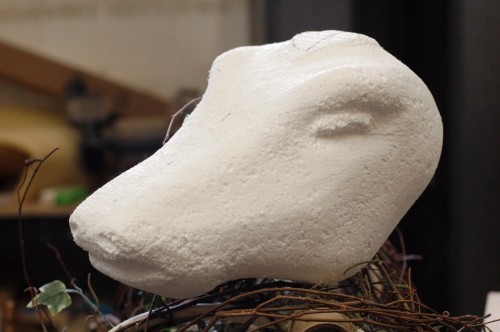
I gave the head a coating of papier-mâché. The design of the show used a lot of found object and natural material arranged to suggest a forest, rather than attempting a realistic portrayal of one. So the construction of the head proceeded in a manner to highlight the fact that it was a handmade object, rather than attempting to completely mimic an actual cow’s head.
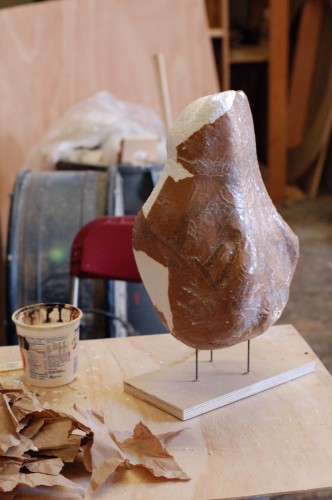
The body was a separate piece; it was just the torso, tail and udder, without any legs. They were basing their design off of the Regent’s Park production (which transferred to the Public Theater this past summer, though I left just before it came).
I started with a structure made of a cardboard tube “spine” and some bent PVC pipe to define the shape. I than began wrapping vines around to create the outer surface. Everything was wired in place, but I also added some twine to make it appear as though it was lashed together.
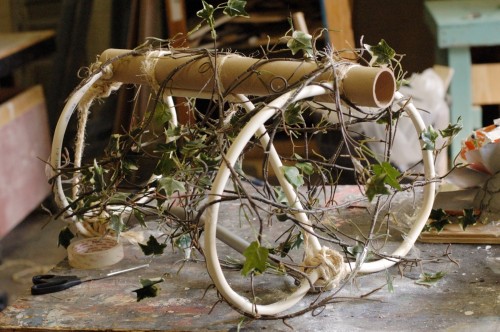
Next for the head were some ears. I patterned and sewed them out of muslin, with a piece of styrene inside to give it some stiffness. Once the ears were on the head, I heated them with a hot air gun so I could curl and shape them. When cool, the styrene retained that shape.
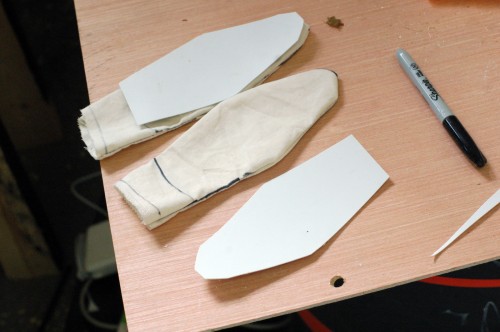
The head got a coat of grey primer, followed by a dry brush of off-white over top. I glued a dowel coming out of the back of the head so the handler could hold onto it and manipulate it around.
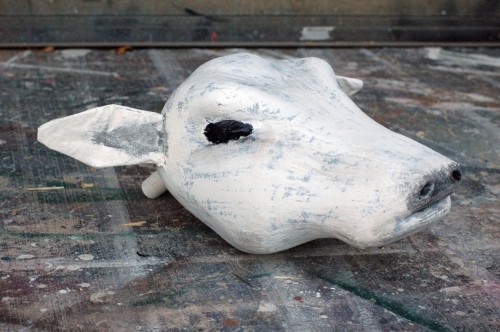
The udder was a few pieces of red fabric which I patterned, sewed, and stuffed with polyester batting. I lined the inside of the body with some screen material so the actors could throw objects inside as Milky “ate” them, and they would be easy to retrieve after the show. I added some raffia to beef out the body since the vines did not give enough coverage on their own.
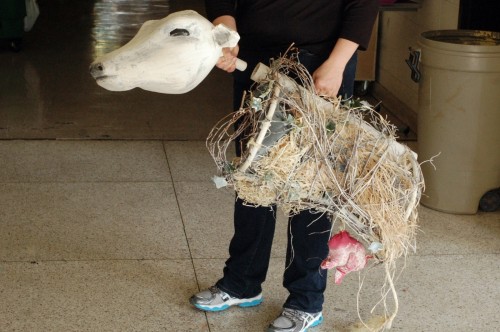
So there you have it; one Milky the Cow!
Friday Props Notes
It’s Friday; enjoy it while you can. For many of us, things are starting to gear back up. School is upon us, new seasons of theatre are beginning as summer stock draws to a close. It’s just a busier time of year all around. So enjoy the following bits from around the web if you get a break:
Here is a newspaper article on Zoe Morsette, who builds specialty props for Broadway (such as Les Miserables and Shrek) and television (including 30 Rock and Saturday Night Live).
This Diablo sculpture is a pretty intense piece made by Jason Babler, the creative director of Make Magazine. He does a tremendous job documenting the various materials and methods he uses to build the various shapes and textures which make up this creature.
“What Tools Do I Need to Start Woodworking” takes a good look at that question, and the answer is useful for any craft, not just woodworking. As the author says:
“The problem is that without experience, a beginner really isn’t able to tell the often-subtle difference between specialized tools. If you get one chisel, one saw, or one plane and put it to work, you’ll begin to understand the relationship between your eyes, brain, hands, sharp steel and wood. When you develop that understanding, the next tool to get becomes obvious.”
To celebrate the release of the first season of Grimm on DVD, NBC has released a short video with prop master Drew Pinniger detailing many of the fantastical props made for the show. Grimm is a fairly imaginative show, and the custom props it features every week are always fun to watch.

